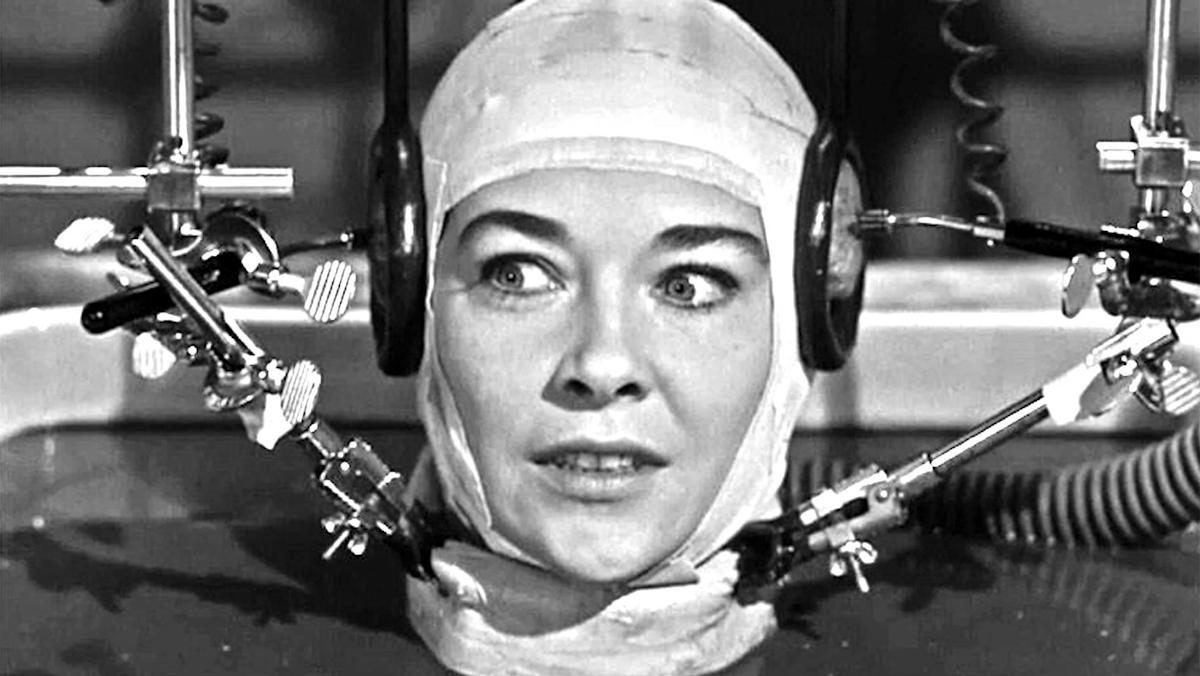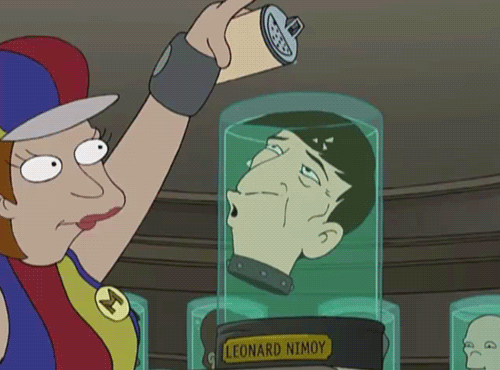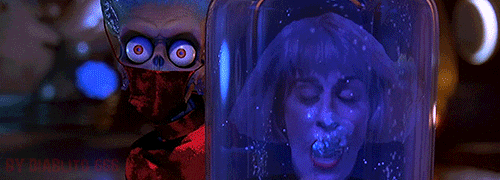In the second of our two-part exploration of the head, we look to the future, via science fiction, and explore life after decapitation.

In my previous post we explored the ways heads have been separated from bodies through history. If there’s one thing we can be certain of when considering decapitation, it’s that it is a sure-fire way of killing a person instantly.
Or is it? According to folklore, in revolutionary France sometimes the executioner would lift a severed head out of the basket to show the amassed throngs and it would blush, blink or look at the executioner accusingly. Whether these reports are reliable or apocryphal is unclear, but the idea that a head can go on living separate from the body is a pervasive and alluring one.
If we were given the choice between death and going on living as a conscious and communicative, but ultimately disembodied, head, I imagine at least some people might choose the latter. Somehow we think that being just a head, we would still be ‘us’ somehow.
This is a common theme in science fiction, from Dennis Potter’s eerie television play ‘Cold Lazarus’ to the cartoon series ‘Futurama’, where preserving the heads of famous people in jars is a regular, absurdist feature (below).

‘Futurama’s ongoing ‘conscious head in a jar’ trope.
One science-fiction film revolving around a living, severed head is ‘The Brain That Wouldn’t Die’ (1962). After a car crash, a nefarious scientist keeps his wife’s head alive while hunting for a new body to graft the head on to. When it inevitably goes horribly wrong, the moral of the story seems to be, as in much science fiction, not to go so far in our scientific hunt for knowledge that we unleash some unnatural, horrific consequence. A notion that goes all the way back to Icarus.
While this plot may seem somewhat far-fetched, the idea of head transplants is now being seriously discussed in the scientific community. Head transplants on animals have been tried with some success in the 20th and 21st centuries, and Italian scientist Dr Sergio Canavero claimed that he would perform the first head transplant on a human in 2018, although this hasn’t yet taken place.
Valery Spiridonov, a Russian man with a muscle-wasting disorder, volunteered to be Canavero’s first head-transplant patient, and worked with him for two years before withdrawing from the project. Canavero said in 2017 that he would carry out the procedure on a Chinese national instead.
Some people claim, understandably, that putting someone’s living head onto a donor body is technically not a head transplant, but a body transplant. The term ‘head transplant’ has been reserved by some for the first transplant of a living brain into a donor head. This takes the feeling of us existing within our heads into territories more abstract: the neuroscientist’s often-repeated mantra ‘you are your brain’.
This claim, lauded by some and denounced by others (including the flamboyant neuroscientist Raymond Tallis, who warns about our culture’s ‘neuromania’), leads us to the philosophical premise of ‘the brain in a vat’. This thought experiment asks if we can really be sure that we are not a floating brain that is being stimulated (by a machine, or an evil demon, perhaps) to believe we are living a physical life, playing tennis, eating dinner, having sex and all the rest of it when in fact we have no body at all and our synapses are just being manipulated in such a way to make us think we are doing these things.
A different kind of head transplant.
As an aside, it is interesting to see how the brain sometimes seems to generate its own content when stimuli is limited. The fascinating Charles Bonnet syndrome, for example, is a condition whereby, when a person goes blind or is subject to monotonous visual information (think of a sailor at sea for months with only the horizon to look at), the brain seems to ‘fill in’ the visual gap left behind with all manner of visual hallucinations.
A brain in a jar is indeed an eerie thing, whether it is being stimulated by a malevolent force or just sitting inert, floating in formaldehyde. But a head separated from a body is perhaps even more uncanny; no matter how airless the museum it is displayed in, we will always find empathy with another human face.
In her excellent book ‘Severed: A History of Heads Lost and Heads Found’, Frances Larson notes “a severed head upsets our easy categories, because it is simultaneously a person and a thing. It is always both and neither… The severed head is compelling – and horrific – because it denies one of the most basic dichotomies we use to understand our world: that people and objects are defined in opposition to each other. It presents an apparently impossible duality.”
About the contributors
Rob Bidder
Rob Bidder is an artist, person-centred counsellor and educator based in Glasgow.

